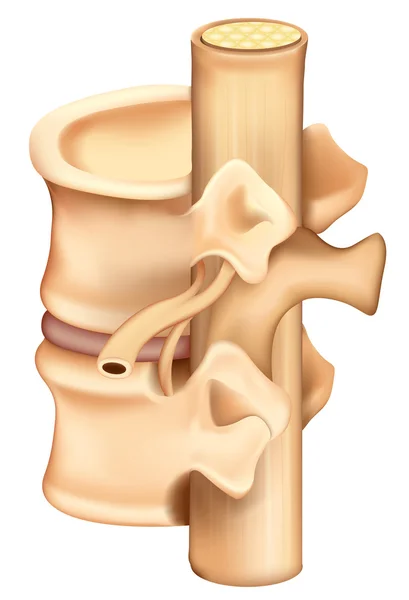In school we as chiropractic students learn about each level of the spinal column and which level innervates (or provides nerve supply to) each organ. This can be helpful when patients present with symptoms that may be coming from a particular organ, such as the lungs for example, so that we can go to the spine and see if there is any somatic cause for the symptoms – what I mean by this is to see if there is any bony displacement at that level such as a rotation, displacement to either side, facet joint involvement, etc. that might be affecting the lungs in a negative way.
The journey I’ve made through life so far, as a chiropractor, has been amazing. I have seen the tremendous relief that people can obtain by adjusting the right spinal levels, joints of the feet, ankles, knees, hips, shoulders, elbows, wrists, hands and jaw. Then, learning Zone Technique, it makes providing chiropractic care that much more fun and interesting. It is amazing to help people heal when the medical field can’t find any answers. When someone goes to a well-respected medical establishment for horrible digestion issues and they go through over 90% of the tests possible but can’t find any answers for symptoms. Then employing Zone Technique for a couple of visits, bringing back digestion and feeling amazing. Part of the Zone Technique, specifically with Digestion we adjust both T4 and T8. If you look at the list below, T4 and T8 are major players for the organs of digestion.
As such, I thought I would list out the levels of the spine and the organ(s) and some of the muscles that are usually supplied by each vertebral level of the spine. Here they are:

- C1 (Atlas): Head, neck, inner and middle ear, sympathetic nerves
- C2 (Axis): Head, neck, upper cervical muscles, occipital nerves, suboccipital muscles, posterior cervical muscles
- C3: Diaphragm, neck, trapezius muscles
- C4: Upper shoulders, diaphragm, neck, trapezius muscles, levator scapulae muscles
- C5: Upper arms, diaphragm, elbows, biceps, deltoids, rhomboids
- C6: Wrists, thumbs, biceps, wrists, rotator cuff muscles, levator scapulae muscles
- C7: Triceps, forearms, wrists, hands, trapezius muscles
- C8: Hands, fingers, carpal tunnel, ulnar nerve, rhomboids
- T1: Upper arms, elbows, wrists, hands, intercostal muscles, sympathetic nerves
- T2: Upper chest, heart, lungs, intercostal muscles, sympathetic nerves
- T3: Lungs, bronchi, chest, breast, intercostal muscles, sympathetic nerves
- T4: Gallbladder, liver, stomach, pancreas, chest, breast, intercostal muscles, sympathetic nerves
- T5: Liver, gallbladder, stomach, chest, breast, intercostal muscles, sympathetic nerves
- T6: Stomach, pancreas, gallbladder, chest, breast, intercostal muscles, sympathetic nerves
- T7: Pancreas, duodenum, stomach, chest, breast, intercostal muscles, sympathetic nerves
- T8: Spleen, stomach, liver, adrenal gland, chest, breast, intercostal muscles, sympathetic nerves
- T9: Adrenal gland, pancreas, stomach, duodenum, chest, breast, intercostal muscles, sympathetic nerves
- T10: Kidneys, ureter, appendix, small intestine, chest, breast, intercostal muscles, sympathetic nerves
- T11: Kidneys, ureters, small intestine, appendix, chest, breast, intercostal muscles, sympathetic nerves
- T12: Colon, small intestine, lymphatic system, reproductive organs, bladder, intercostal muscles, sympathetic nerves
- L1: Large intestine, appendix, abdominal muscles, upper legs, hips, inguinal ligament, genitalia, sympathetic nerves
- L2: Appendix, upper legs, hips, femoral nerve, sympathetic nerves
- L3: Bladder, uterus, prostate, upper legs, knees, feet, sciatic nerve, sympathetic nerves
- L4: Large intestine, lower back, thighs, knees, feet, sciatic nerve, sympathetic nerves
- L5: Ankles, feet, knees, sciatic nerve, sympathetic nerves
- S1: Genitalia, buttocks, lower back, thighs, legs, sciatic nerve, sympathetic nerves
It’s not very fancy, but it does get the job done. As you might notice, some organs are supplied by nerves from more than one vertebral level. It is also interesting to note that not everyone will have the exact same nerve distribution, there are some variations from person to person to some level. We can’t all be exactly alike, right? – That would be boring.
If you have any health issue or symptoms that you would like help with, or, if you would just like to become a healthier person feel free to make an appointment to have a free consultation or set up an appointment to be seen by Dr. Post at Zumbrota Chiropractic. If you live too far away to be seen by Dr. Post, there are certain chiropractors or healers that I would suggest above all others – Certified Zone Practitioners. Click on this link if you need to find someone who is better at healing and can help you heal at a much higher level:
https://zoneschoolofhealing.com/directory/?geodir_search=1&stype=gd_place&s

